Abstract 2/2020
Table of content
Maciej Górowski, Zbigniew Konieczek – Tram driving autonomy as a tool to support the work of motorists
Piotr Soczówka, Renata Żochowska, Aleksander Sobota, Marcin Jacek Kłos – Influence of travel-related factors on the time of arrival to the public transport stop
Adrian Barchański, Renata Żochowska, Marcin Jacek Kłos, Piotr Soczówka – Classification of interchanges on the example of the GZM area – multi-criteria approach
Krzysztof Grzelec – Organizational conditioning of passenger urban transport development
Wojciech Suchorzewski – Role of women in urban public transport
Stanisław Jurga, Adam Kaniewski – Trams with autonomous power supply in Krakow
Abstracts
Maciej Górowski, Zbigniew Konieczek
Tram driving autonomy as a tool to support the work of motorists
Abstract: The article discusses the project related to the autonomy of tram driving, implemented as a tool supporting the work of motorists. Within the framework of this task the first tram controlled in Poland in an autonomous mode took place. The tram was equipped with a precise satellite navigation system and a control system, ensuring the vehicle without an engineer to move along the route. The target assumption of the project is to implement a driving assistant for the motorists, to support them by taking care of some of their duties. It is also designed to supervise driving safety.
Key words: public transport, tramway, autonomous tram, NEWAG
Piotr Soczówka, Renata Żochowska, Aleksander Sobota, Marcin Jacek Kłos
Influence of travel-related factors on the time of arrival to the public transport stop
Abstract: Increasing the share of travel by public transport is of the priority actions related to the development of sustainable mobility in urban areas. In order to encourage passengers to use public transport it is necessary to provide appropriate level of offered transport services. One of demands made by passengers is the accessibility to public transport stops. To better understand how passengers make a decision on walking to the stop, a research was conducted to study the influence of selected travel-related factors on the time that passengers use to walk to the stop. Following factors have been studied in the research: trip purpose, start time of the trip and travel time. In order to study the diversification of the influence of selected factors, statistical methods were applied: comparative analysis of distributions using descriptive statistics and comparative analysis using Kruskall-Wallis test. Basing on obtained results of the analysis it was concluded that only travel time has significant influence on the time that passengers walk to the stop.
Key words: public transport, public transport stops, accessibility
Adrian Barchański, Renata Żochowska, Marcin Jacek Kłos, Piotr Soczówka
Classification of interchanges on the example of the GZM area – multi-criteria approach
Abstract: Public transport hubs are key elements of a modern transport system, which have a strong impact on the life quality of urban areas inhabitants. They heavily affect attractiveness of the entire public transport system, which, in order to compete for travellers, must be efficient and effective. It is also important to tent to reduce inconveniences associated with changes during the journey. Properly designed public transport hubs may contribute to reduce the number of trips with the use of individual transport by decreasing congestion and traffic noise, thus making public transport more attractive. In literature there is a variety of criteria and ways to classify transport hubs. However, there is a lack of precise information about the required or existing level of accessibility and coherence, separately for each type of the hubs in the conurbation scale, of which the Górnosląsko-Zagłębiowska Metropolis (GZM-Upper Silesia and Dąbrowa Basin) is an example. It is necessary to organise the classification and to carry out a standardised analysis of the degree of attractiveness of the different categories of interchanges located in a specific area. The basis for the adopted classification was arrangement of public transport lines, existing subsystems of public transport and location of the object in the spatial structure of GZM. The proposed method of classification allows to determine current degree of spatial connectivity and integration of public transport systems in transport hubs of different types and arrangement of the contemporary principles of their location and shape in relation to the spatial structure of the city.
Key words: transport hubs, interchanges, public transport, integration, railway stations
Krzysztof Grzelec
Organizational conditioning of passenger urban transport development
Abstract: In recent years, new transport and digital technologies have been determinants of changes in the transport behavior of the population. Public authorities allocate considerable amounts to the development of new modes of transport. They underestimate the importance of choosing appropriate organizational forms for new activities. Private companies experiment with various business models and under time pressure, take risky decisions that often result in withdrawing services from the market or liquidating activities in a given market. These phenomena are typical for markets with high growth dynamics. Sustainable mobility objectives, however, require stabilization of alternative services to private cars. This article is devoted to the issue of organizational conditions on various sub-markets. Market development factors from public transport, vehicles per minute and a new form of mobility – Mobility as a Service were discussed. The summary contains the most important conclusions from the analysis.
Key words: urban transport, public transport, organizational forms, business models
Wojciech Suchorzewski
Role of women in urban public transport
Abstract: The article presents the role of women working in urban public transport companies. The topic is important not only because of unequal treatment of men and women in the sector. The current issue of the sector is the human resources problem, resulting from the currently limited interest of men in working in transport services including the key positions (management, customer service and driving) where women prove their quality and effectiveness. The current state in Polish companies and in other EU countries has been described . Among others, the findings of projects co-financed by the EU, such as WISE and WISEII have been described. Actions, taken by other organizations such as UITP and work associations, supporting and promoting of women employment in public transport sector have been discussed as well. Traffic safety is one of aspects taken into account. Research results show that one of the benefits of employing women as bus and motorists is a reduced risk of causing accidents. It does not mean that actions encouraging women to work in public transport are to be limited to attract them to this profession . In many companies the share of women on director/manager position is growing. Aspects increasing attractiveness of women work in public transport companies that have been identified: ability to reconcile work and family/social life, especially concerning work organization, better workplace safety and security, culture of work, elimination of sector-based wage gap between women and men, remuneration, promotion and qualification prospects (vocational training).
Key words: public transport, women-bus driver, women-tramway driver, role of women, women – traffic safety
Stanisław Jurga, Adam Kaniewski
Trams with autonomous power supply in Krakow
Abstract: There are systems available on the market that allow the liquidation of an overhead contact tram line, which, in accordance with current urban planning trends, are able to provide an improvement in their aesthetics, especially in historic city centers or in places where the installation of an overhead contact line may be difficult. As part of a study work the MPK Krakow analyzes possible variants to achieve this goal with new vehicles and those already in use by the carrier. Interviews with potential suppliers excluded the possibility of adapting some of the low-floor vehicles to work on a line without an overhead contact line and allowed determining the direction in which the MPK Krakow is currently heading towards in terms of purchasing new rolling stock. The requirements that vehicles must meet to achieve the goals have been formulated. As a as part of delivery of 50 new trams the MPK Krakow has decided to purchase few vehicles allowing to drive a section without power from the overhead contact line. The rest of vehicles will be ready to retrofit the aforementioned system. At present, it is expected that the real operation of vehicles on designated sections of the line, where the traction network is expected to be removed in the future, will allow for validation of assumptions and the answer to the question whether the requirements for operating conditions are sufficient in the long term perspective and what are the actual costs of maintaining the storage tanks energy. This allows to determine their durability and learn the disadvantages and weaknesses of the solutions available today.
Key words: urban public transport, tram transport, tram with autonomous power supply

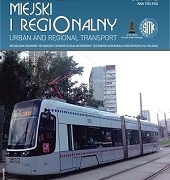
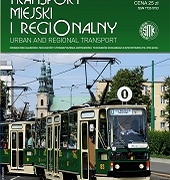
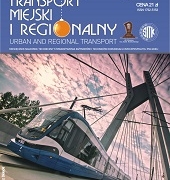 SITK RP
SITK RP 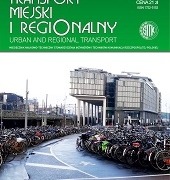
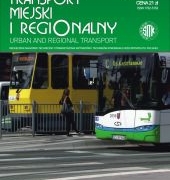 SITK RP
SITK RP 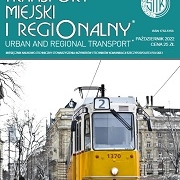 SITK
SITK 

